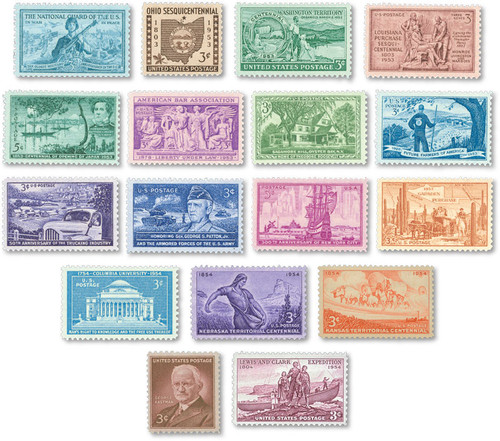
1954 3c Nebraska Territory
# 1060 - 1954 3c Nebraska Territory
$0.35 - $18.50
U.S. #1060
1954 3¢
Nebraska Territory Issue
1954 3¢
Nebraska Territory Issue
Issue Date: May 7, 1954
City: Nebraska City, Nebraska
Quantity: 115,810,000
Printed by: Bureau of Engraving and Printing
Printing Method: Rotary Press
Perforations: 11 x 10 ½
Color: Violet
City: Nebraska City, Nebraska
Quantity: 115,810,000
Printed by: Bureau of Engraving and Printing
Printing Method: Rotary Press
Perforations: 11 x 10 ½
Color: Violet
Ohio became a state on March 1, 1803, and Nebraska joined the union 64 years later on the same day.
U.S. #1060
1954 3¢
Nebraska Territory Issue
1954 3¢
Nebraska Territory Issue
Issue Date: May 7, 1954
City: Nebraska City, Nebraska
Quantity: 115,810,000
Printed by: Bureau of Engraving and Printing
Printing Method: Rotary Press
Perforations: 11 x 10 ½
Color: Violet
City: Nebraska City, Nebraska
Quantity: 115,810,000
Printed by: Bureau of Engraving and Printing
Printing Method: Rotary Press
Perforations: 11 x 10 ½
Color: Violet
Ohio became a state on March 1, 1803, and Nebraska joined the union 64 years later on the same day.











